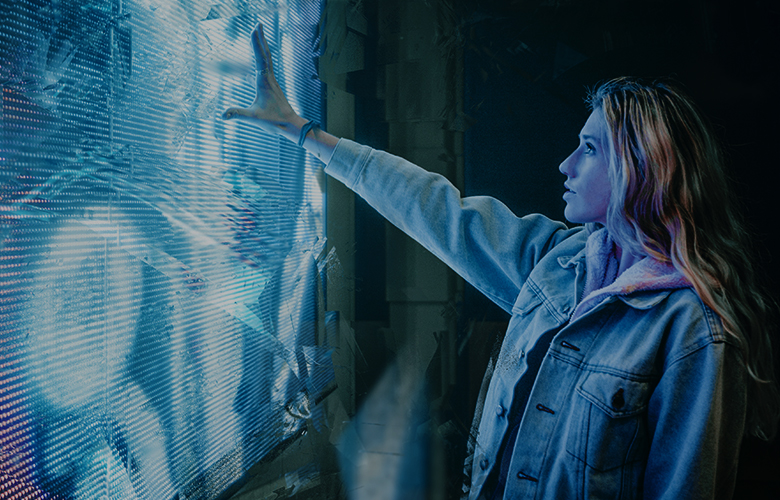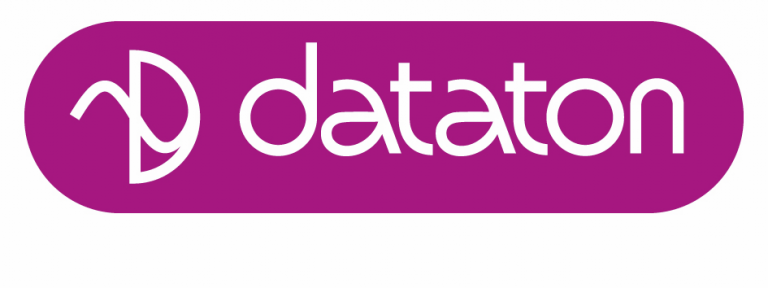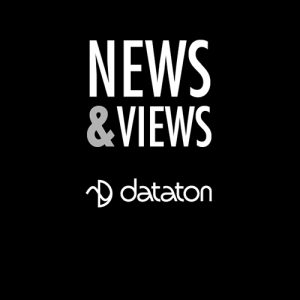
Projection has traditionally been considered to have an unassailable advantage over other media when it comes to making any surface a digital canvas. From a shop window to the facade of a cathedral, projection has the edge – particularly when the latest projection mapping techniques are employed. Is that all about to change? After walking the halls at ISE 2020, Adrian Pennington considers recent advances in direct view LED and wonders if the gap has now narrowed.
Pixel pitches in the region of 1mm to 4mm were ten-a-plenty at ISE 2020 with sub-1mm pitches now being introduced making it possible to clearly display vastly more detailed content. Smaller pixel pitches mean more flexibility for boardroom environments, for example, justifying video wall LCD replacement – although LED still sits higher in price.
High powered processing engines further boost image quality by enabling each pixel to be individually calibrated and providing consistent quality across a display’s lifetime. Colour rich, high contrast, high dynamic range visuals have always better performed in ambient light conditions where LED scores over projection.
But these advances are not all. Panels are also thinner, lighter and more scalable than ever before, with a wider variety of module sizes. We can even create curves and twists with faceted or flexible panels.
LED ‘sheets’ exhibited at ISE 2020 by Spanish company Flying Screens can be combined to create custom-size screens for install in unconventional locations such as on curved surfaces. The company claims the technology allows design and features which are currently impossible to meet with traditional LED panels.
At ISE 2020, Leyard and Planar were among those presenting ultra-fine pitch demonstrations of a 0.6mm video wall featuring microLED at ISE 2020 supporting 8K. Ledeca introduced its 3mm flexible LED module. Acronn was showing FLEX P5 magnetic LED units and Infiled demoed Wallpaper LED that mounts directly to a wall and is only 3cm thick as well as flexible LED module for architectural installations.
Flexible LED isn’t actually such a new thing. Rubber-backed LED panels that attach to a metal frame using magnets have been available for a decade. What’s changed is that the resolution of these flexible panels has reduced to a few millimetres. They’ve also become a lot lighter so they can be built onto a thinner framework – now you can hang them from ceilings and build video displays at scale without needing a massive support structure. Front access to the control box means that you can mount these panels directly up against other structures and your designs aren’t limited by having to accommodate rear access.
LED is also more readily available from all the major tier one manufacturers, especially with new technology such as CoB (Chip on a Board) and miniLED coming to market. Arguably, the real shift has been the ability to custom-fabricate printed circuit boards shapes which permit the design of any cut shape.
Each product has its own pixel pitch and bending characteristics. From circles to complete logos and even domes – all made to spec. When you’re building flat LED video walls you don’t need to worry about product selection during the design process because there’s such a wide variety of standard-specification products available.
Even simple curves and corners can be achieved with off-the-shelf products and existing components. But more complicated designs generally require custom-made metalwork and LED panels so it’s important to involve your technical partners much earlier in the process to select products and design a solution around their capabilities with enough lead time to get bespoke components manufactured and tested.
“With flexible and freeform LED the creative possibilities are virtually limitless,” enthuses Michel Buchner, creative technologist from project designers and consultants Nexxt Technology. “The only problem is that the majority of designers and architects are not aware of this yet. Once they think beyond the frame and more about animated wallpaper, patterns, and textures blended as elements in their designs we expect a large rise in the use of aesthetic media with both projection mapping and flexible LED.”
The majority of installers will just do what their clients, architects and designers ask of them within their product portfolio. The bulk of their work is to deliver a standard aspect ratio solution.
“Content design is not an intrinsic motivation and has most of the time already happened,” Buchner says. “In general, installers tend to stick to the proven portfolio with straight lines and flat surfaces.”
The challenge then is how to make designers aware of the creative possibilities and remove the fear of working ‘outside the frame’.
One aspect to this is that the physical design and content production processes need to be completely in sync for complex LED installations. Pre-visualisation is important here for content designers so that LED vendors can produce a detailed map of the physical design and then translate that into a digital 3D model. The designers can then see exactly how their content will land on the screen.
With so many possibilities, from fixed to wall and pop-out, ceiling suspended, recessed, moveable on track system, and even concave and convex, content needs to be adapted according to the structural design.
“A key consideration is where the content is being viewed from and does it need to be in a specific aspect ratio as this will impact which pixel pitch should be used,” advises Tom Fenton, senior Business Development Manager at mounts specialist Peerless-AV.
Content design also needs to be approached with a spatial mindset and this means conceptualising outside the boundaries of hardware. It is vital to drop the convention of the regular screen as most people look at it today. The most important factor is analysing the space and purpose you are designing for and thinking in content from the start.
Questions like ‘Is it a commercial or primarily artistic design?’ and ‘What should your spectator experience?’ should inform design. Do you want active attention or does it complement the space in an artistic way like a wallpaper or light sculpture?
Then with tools like VR and 3D CAD designs can be validated upfront. Experienced 3D projection mapping designers will have the skills to translate content across multiple screens and different surfaces. “They can think spatially and know the tricks to bring a space to life,” says Buchner.
Every space or building has its own approach with visual media, but with numerous solutions and financial ramifications, the design process itself needs reimagining and when that happens, the possibilities are virtually limitless.

Also by News & Views by Dataton:
What Every Media Server Operator Should Know


The News&Views blog is created by Dataton, and is about multi-display software and surrounding technologies, media servers, content creation - basically anything within the AV industry that serves to enrich the audience experience! Dataton has provided outstanding products to the audiovisual industry for over 40 years and is the maker of the WATCHOUT production and playback system. WATCHOUT systems are used globally in performing arts venues for scenic projection – in theatre, dance, and musical performances. We first started publishing News&Views, with content reflecting the world of multimedia communication, back in the 80s!
Read Full Profile© 2021 TheatreArtLife. All rights reserved.

Thank you so much for reading, but you have now reached your free article limit for this month.
Our contributors are currently writing more articles for you to enjoy.
To keep reading, all you have to do is become a subscriber and then you can read unlimited articles anytime.
Your investment will help us continue to ignite connections across the globe in live entertainment and build this community for industry professionals.